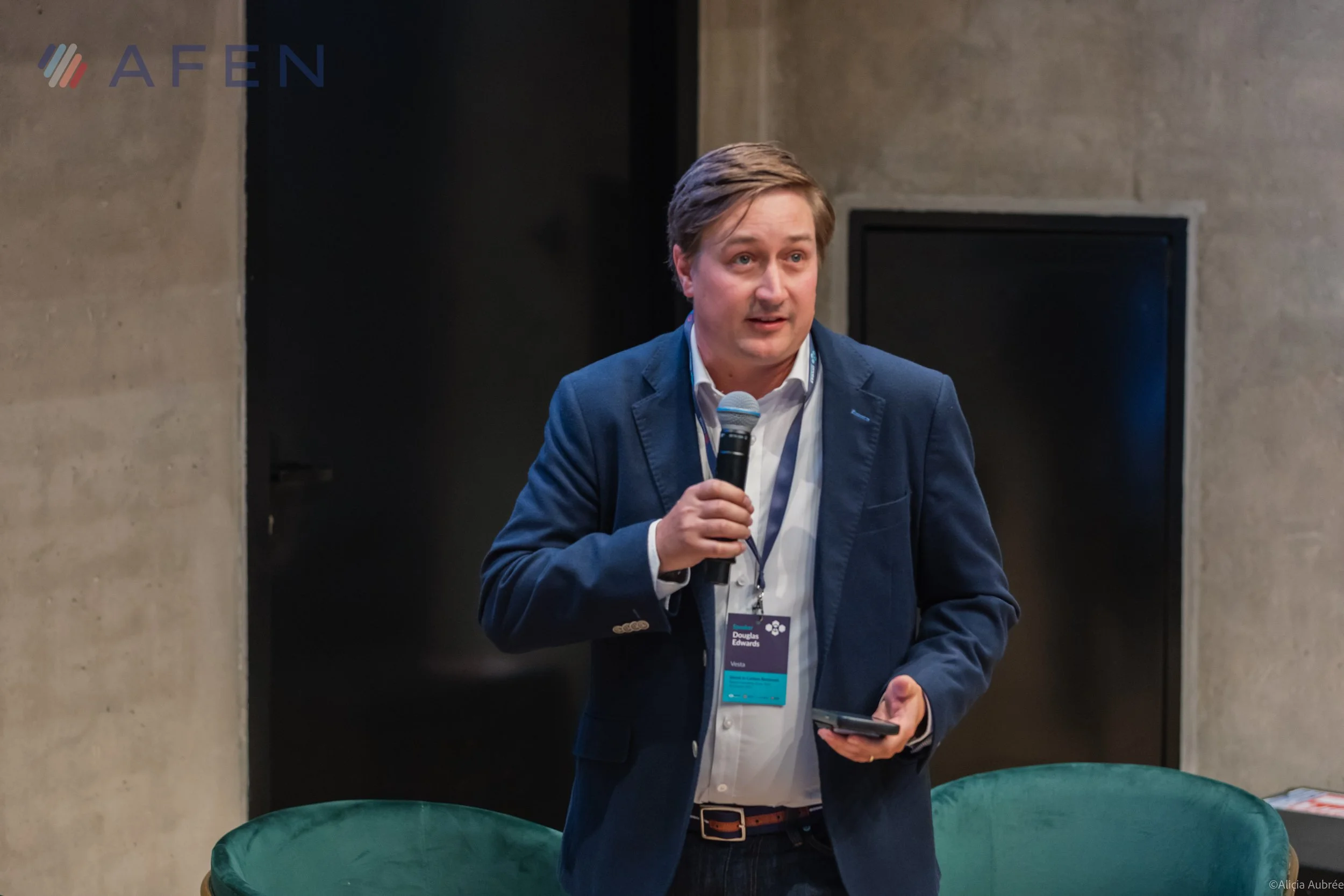Paris proved carbon removals are bankable if we fix the financing mechanics
At AFEN’s CDR Days with France Invest, hosted at BCG Paris, the “Invest in Carbon Removals” series convened 80 investors, lenders, buyers and developers to stress-test what it takes to move permanent carbon removals (CDR) from pilots to financeable assets. With policy frameworks (CRCF, Green Claims, ISO/SBTi) taking shape and demand signals building, the conversation focused on making credits verifiable, standardised and fundable so Europe can build out a real CDR industry.
Welcoming remarks came from Eric Marty (France Invest) and Chris Sherwood (Negative Emissions Platform). The programme mixed company “espresso shots” across DAC, direct ocean capture, biochar/thermochemical, ocean alkalinity, enhanced rock weathering and mineralisation, aiming to translate climate outcomes into investable projects for European capital.
How to unlock bankable carbon removals
Moderated by Dr. Cara Maesano, we started with a keynote from Sébastien Dewarrat (ClimeFi), then a hands-on panel with Quentin Servais-Laval (Deep Sky), Andrew Shebbeare (Counteract) and Olle Billinger (SEB).
Their main point: the hardest step is getting from pilot to the first full commercial plant. Banks will lend to projects with their own balance sheets, but they won’t take technology risk. They want clear, standardised products, independent measurement and verification, multi-year purchase agreements, and deal sizes big enough to justify the work (often around $30–35 million).
To close the gap, tools like buyer-backed offtake contracts, pay-for-results bonds, guarantees, and early public purchasing can help projects reach the green light for construction.
NEP and AFEN Members showcase how to remove CO₂ for good
-
Thermochemical conversion (pyrolysis) turns waste/biomass into biochar and energy co-products. The biochar stores carbon for centuries when used in soils or materials, while co-products can displace fossil energy. With clear MRV (e.g., biogenic content testing) and defined use cases, this pathway supports durable, permanent carbon removals and bankable credits.
-
Marine enhanced rock weathering places suitable rock in coastal environments to raise alkalinity; as minerals dissolve, seawater converts atmospheric CO₂ into stable bicarbonate for long-term storage. Field monitoring plus lab data underpin MRV and environmental safety, making these permanent carbon removals verifiable.
-
Ocean alkalinity enhancement integrates compact units into coastal infrastructure (e.g., desalination outfalls) to increase alkalinity and expand the ocean’s natural capacity to store CO₂ durably, while helping counter local acidification. Continuous monitoring and site controls enable MRV and credit issuance.
-
Direct ocean capture splits seawater streams and uses controlled pH shifts to release dissolved CO₂ for capture, returning decarbonised water to the ocean. Captured CO₂ is routed to geological or mineralisation storage for permanence; modular systems at sites already pumping seawater enable scalable MRV-backed removals.
-
Supercapacitive direct air capture (DAC) uses electrochemical modules to move ions and bind CO₂ from ambient air at lower energy than first-gen DAC. Built from modular activated-carbon electrodes, it targets grid-flexible operations, replicability, and transparent MRV so purchased removals are high-integrity and permanent.
-
Local mineralisation hubs react CO₂ with alkaline industrial residues (steel slag, bottom ash, concrete fines) to form stable carbonates—literally turning CO₂ into stone. By matching nearby sources and sinks and standardising measurement, these hubs cut logistics costs, improve project economics, and deliver durable, MRV-verified carbon removals.
What it takes to scale carbon removals now
Build the first commercial plants like real projects, not experiments. Keep the core technology with the company that invented it, put each plant in its own project company, and prove clearly and publicly how every tonne is captured and stored for the long term. Secure multi-year purchase agreements so cashflows are predictable. Use public buying and clear rules to pull in banks and long-term investors. Do this and carbon removals move from pilots to a financed, growing industry.
Invest in Carbon Removals is an initiative of the Negative Emissions Platform
Designed to connect finance with carbon removal innovators worldwide, the series builds the foundations of a trusted, investable CDR market.
Learn more: negative-emissions.org/invest-in-carbon-removals







